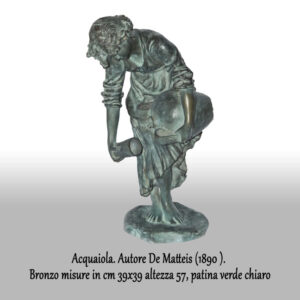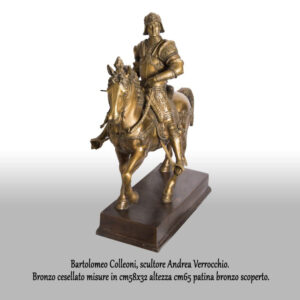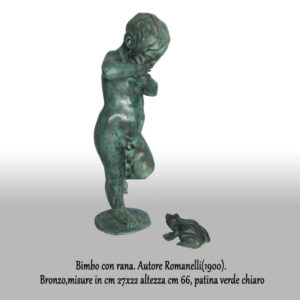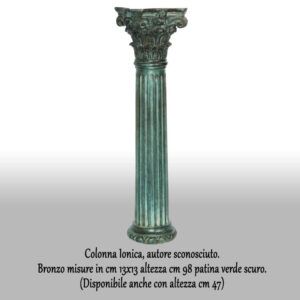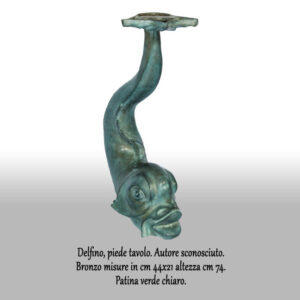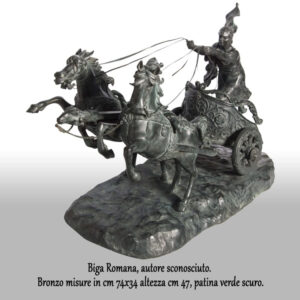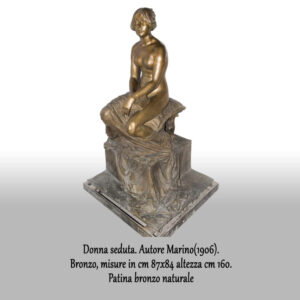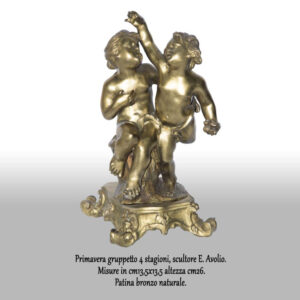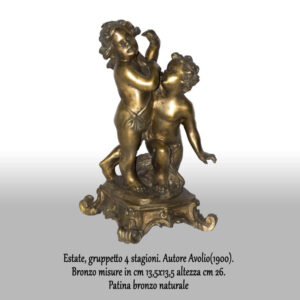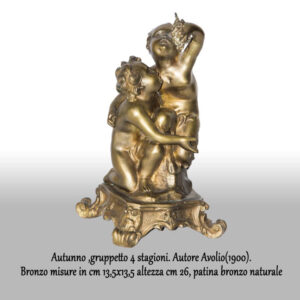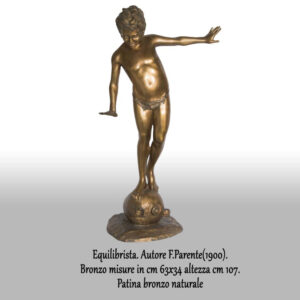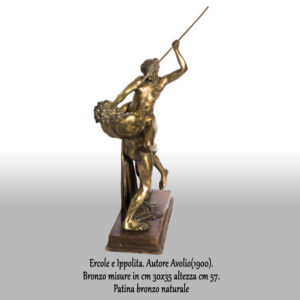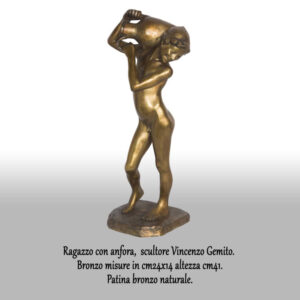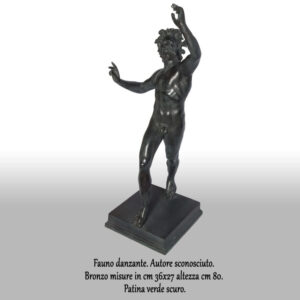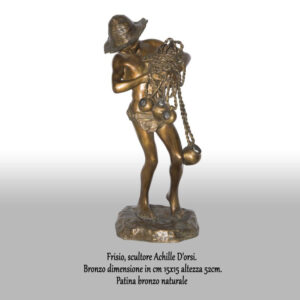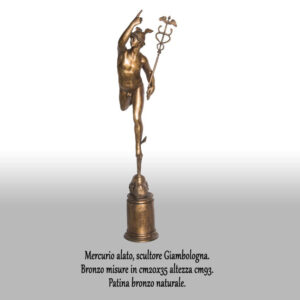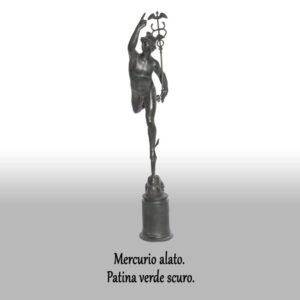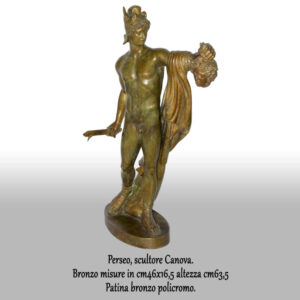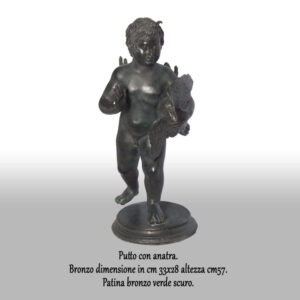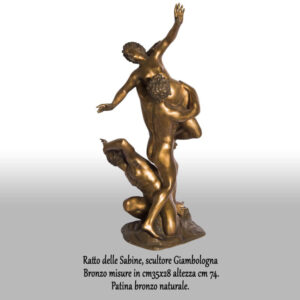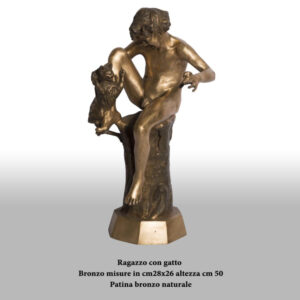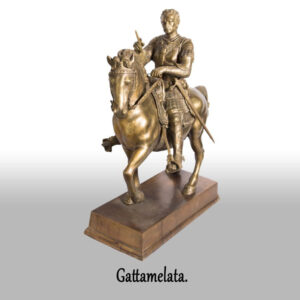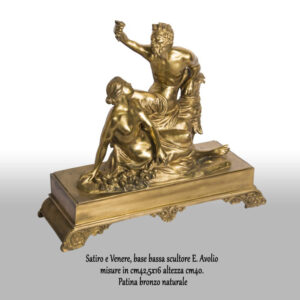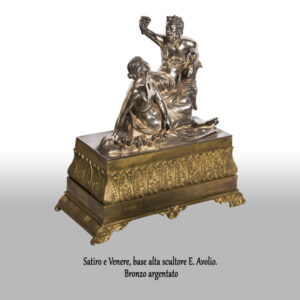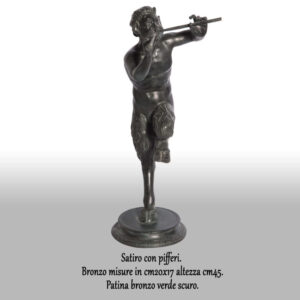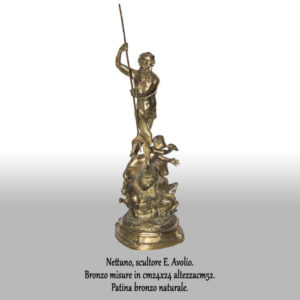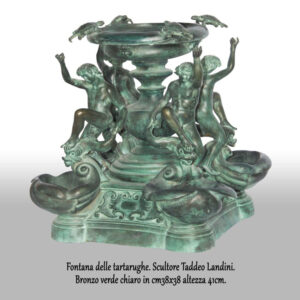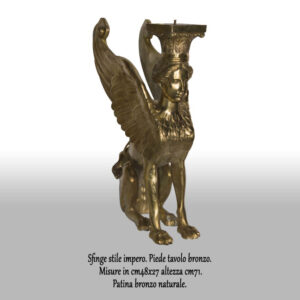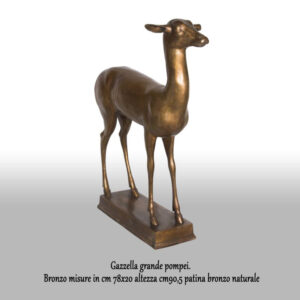ITALIAN BRONZES AND SCULPTURES
Over the years, the history of Italian art has been influenced by numerous currents that have found their greatest expression in works now known all over the world for the ability and mastery of their craftsmen.
To the sculpture, for the greatest strenght of its materials, has often been assigned the role of transmitting the values of ancient art to modern generations, turning it into the bridge between the artists of distant ages. During the Middle Ages, sculptors were more interested in the symbolic and transcendental part of works than their verisimilitude. The monumental sculpture was rediscovered after the year One thousand forms of decoration for architecture and the most used materials were marble, bronze, precious metals, stone and wood.
This period is called of Gothic and saw among its major exponents Nicola Pisano, Arnolfo di Cambio and Andrea Pisano (known for having realized the bronze south door of the Baptistery of Florence). From 1400 Italy lived a period of strong revival, which reflected remarkably on the artistic conception of the time. As part of the Renaissance sculpture, a rediscovery of classical art attracts attention to the study of human anatomy and its perfect proportions. Examples of the search for this balance were the works of Donatello (David, Our Lady with a Child, Christ dead among the angels, St. John the Baptist, putti etc.) and Michelangelo Buonarroti (David, Moses, Bacco, Vatican Pietà etc.).
In contrast to the classical style, Mannerism developed through Baroque style and later Rococo.
In this regard, the sculptures by Gian Lorenzo Bernini perfectly embodied the new ideals, proposing sculptural patterns of the most complex forms (Apollo and Dafne, Medusa, Rat of Proserpina, Neptune and Tritone, etc.).
With the discovery of the cities buried around Mount Vesuvius, the classic model is reproduced in its purest form through sculptures that will be termed “neoclassical” such as those of Antonio Canova (Love and Psyche, Paolina Borghese, Three Graces, etc.). The production of Antica Fonderia Artistica Di Giacomo, with its very high manufacturing and attention to detail, continues the Italian sculptural tradition.
The monumental works, made over the years, have conferred to the Fonderia Artistica Di Giacomo all the know-how of a millennial art that is nowadays carried out with great professionalism from the last descendants of the Di Giacomo family: Giuseppe and Marcello. The monumentality of the works reaches canons of timeless beauty that, even nowadays, keep alive their uniqueness and originality.
Just think of the Aluminum Horse placed in the Sala Te of Mantua, at the Monument of the Carabinieri of Taranto or the bronze doors of the Palermo Cathedral and the Church of San Giovanni Rotondo.
These are just few examples of monumental works made by merging of Fonderia Di Giacomo, a company that has been able to preserve over time the principles of an ancient art with the modern ability to express the highest artistic values that few companies can today boast.



